#Hierarchy in Collection Framework
Text
ArrayList Class in Java With Program Example
Arraylist is a child class of AbstractList and implements List interface. It represents dynamic array that can grow or shrink as needed. In case of standard array, one must know the number of elements about to store in advance. In other words, a standard array is fixed in size and its size can’t be changed after its initialisation. To overcome this problem, collection framework provides…

View On WordPress
#arraylist#collection#collection framework#Hierarchy in Collection Framework#java#java program#List interface
2 notes
·
View notes
Text
I went to the anarchist/abolitionist healthcare conference this weekend, and it was really a beautiful experience that I don't even have words for. Being able to share resources, knowledge, dreams, and joy together with other people invested in this work was so special, and I gained a ton of hope by seeing the many ways that other people are actively engaged in resisting these fucked up systems and building care into our communities. I gave a presentation about psych abolition, talked about resistance within the psych ward, and got a standing ovation from a room filled with 50 people, many of whom were mental health professionals looking to build solidarity. I legitimately almost cried because of being to have that experience with my mad comrades. I met so many beautiful crazy people who intimately understand what it means to survive as a mad person, and just gained so much knowledge from people actively putting their abolitionist values into practice. I want to share a few of my favorite resources that I became aware of at this conference, and I'll make another post later with some of my key takeaways.
Mutual Aid Self/Social Therapy: This is a support framework designed by one of my friends that provides an intentional structure for providing therapetuic support within communities, especially organizing communities where there's a lot of burnout. It offers so many resources for skills training to allow anyone, whether you have a background in emotional support or not, to set this up within your community. The framework is purposefully not hierarchial or transactional, and allows for actually addressing people's material conditions as well as providing space for emotional processing.
Of Unsound Mind: Incredible archive and research on psychiatric history. Mostly focused around America, but also has some info on other countries. The author of the website will be coming out with a book later this year, which I think is mostly going to be about the Trieste, Basaglia, and that history of psych resistance in Italy.
Power makes us Sick: Collective that focuses on autonomous healthcare and emotional support, especially in terms of autonomous trans healthcare. Has some fabulous zines and resources.
A Corpse among Corpses: Incredible documentary about asylum graveyards in the Midwest and the trade of graverobbing for experimentation in medical schools, and how this connects to settler colonialism, slavery, eugenics, and modern gentrification. Really do want to emphasize a trigger warning for genocide, eugenics, medical violence, self harm, antiblack racism, instituionalization, and lots of discussion of death. I talked a lot with the filmmakers, and really appreciated their care and intent in making this film as a way of bearing witness rather than exploiting atrocity in the name of art, but do want to be very clear that this film is incredibly heavy to watch and might be something worth doing with other people. It was deeply impactful for me, and made me tear up many times.
The Living Museum: Through transforming the old Creedmoor hospital grounds into a musuem and workspace for current patients to showcase their art, this space celebrates psychiatric resistance, transformation, struggle, and joy. I really want to go visit and share in that space, as it seems just so fucking cool. It seems like you might need to contact directly to schedule a visit.
Cahoots Crisis Response Model: This is one model for crisi intervention teams that respond instead of police. They are not perfect, still have some enagement with police, but are an interesting example of how to try to implement these types of programs. Since theyv'e been around for 25 years, they have a lot of knoweldeg and could be a good first group to reach out to if you're trying to create this in your community.
Overall this whole weekend was a beautiful example of how to put our values into practice, and really just wanted to share these projects with you all!
#personal#psych abolition#mad liberation#mad pride#antipsychiatry#mad studies#mental illness#neurodivergence#okay to reblog!
293 notes
·
View notes
Text
Radio Alastorianism - Ficto-Religion
Radio Alastorianism is a Ficto-Religion centered around the enigmatic and charismatic figure of Alastor, also known as the Radio Demon, from the animated series Hazbin Hotel. Followers of Radio Alastorianism believe in embracing the chaotic nature of existence while finding solace and empowerment through Alastor's teachings and example. The religion is structured to provide a sense of community and support for individuals navigating the complexities of life.
Core Tenets:
Embrace Chaos: Followers of Radio Alastorianism believe that chaos is an inherent part of existence and should be embraced rather than feared. They see chaos as a catalyst for change and growth.
Self-Expression: Radio Alastorianism encourages individuals to express themselves freely without fear of judgment. Followers believe that self-expression is a powerful tool for personal empowerment and connection with others.
Empowerment Through Entertainment: Central to Radio Alastorianism is the belief in the transformative power of entertainment. Followers see entertainment, particularly music and performance, as a means of transcending hardships and connecting with others on a deeper level.
Community Support: Radio Alastorianism emphasizes the importance of community and mutual support. Followers are encouraged to uplift and assist one another, fostering a sense of belonging and camaraderie.
Adaptability and Resilience: Followers of Radio Alastorianism strive to cultivate adaptability and resilience in the face of adversity. They believe that by embracing change and learning from setbacks, individuals can emerge stronger and more capable.
Leadership and Governance: Radio Alastorianism operates on a decentralized structure, with no formal leaders or hierarchy. Instead, followers rely on their own experiences and interpretations of Alastor's teachings to guide their spiritual journey. Community decisions are made collectively through consensus-building and open dialogue, ensuring that all voices are heard and respected.
Overall, Radio Alastorianism offers a unique blend of artistic expression, community support, and philosophical inquiry, providing followers with a framework for navigating the complexities of existence with courage, creativity, and resilience.
#hazbin alastor#hazbin hotel#radio alastorianism#ficto religion#pc paganism#alastor the radio demon#fictoreligion#fictoreligions#ficto religions#ficto-religion#ficto-religions#neo religions#neo religion#neoreligions#neoreligion#coining post#coining religions#religion coining
12 notes
·
View notes
Photo
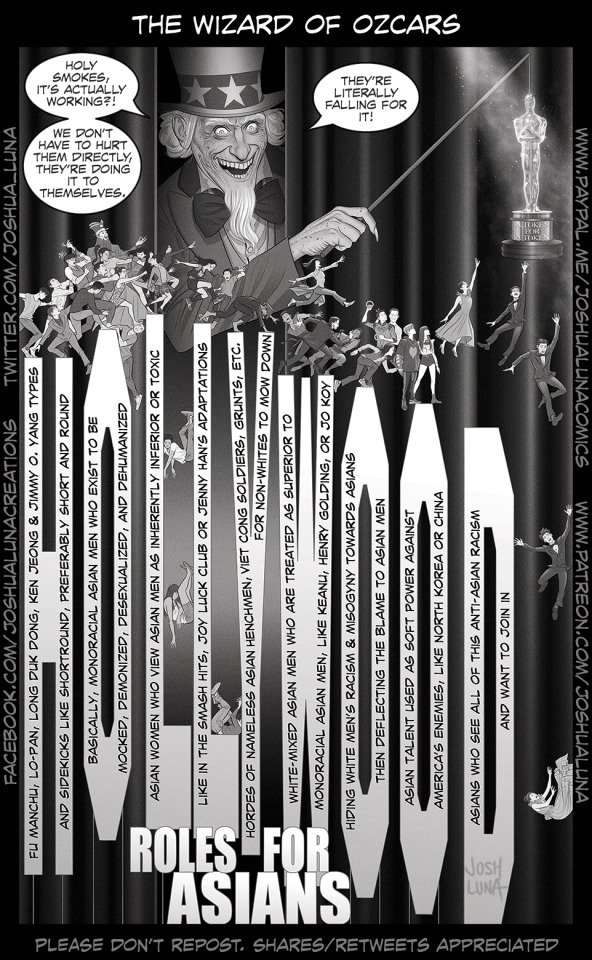
The US and its propaganda arm, Hollywood, have always been anti-Asian. Although opportunities are opening up for Asian actors, the underlying messaging—that divides and hurts Asians—hasn't changed.
Not too long ago, AsAms seemed united in outrage against racism and white-washed casting such as Scarlet Johannsen in Ghost in the Shell, Tilda Swinton in Dr. Strange, or Netflix’s Deathnote. Yet as more projects with AAPI leads and casts were produced, this so-called unity proved to be a lie.
The illusion of AsAm unity fell apart with To All the Boys I Loved Before—which was widely celebrated despite its blatant white-worship. The most recent blow comes from Hulu's The Company You Keep, a U.S. remake of a k-drama that replaced the male love interest with a white man.
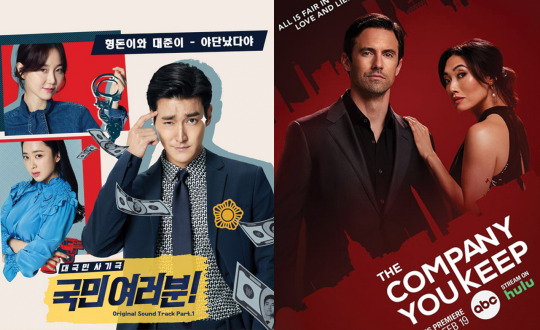
Once it seemed like AAPI women were getting roles and being “humanized” (i.e. garnering attention and approval from white men on-screen and off) AAPI with media power were satisfied. It didn't matter that AAPI men were still erased and dehumanized—even in supposedly pro-AAPI projects.
Not only do AAPI with media power not care about the continuing harm against AAPI men, they exacerbate it. When AsAms critique anti-Asian narratives—especially ones erasing or targeting AsAm men like TATBILB—they're gaslit, harassed, censored and even permanently blacklisted.
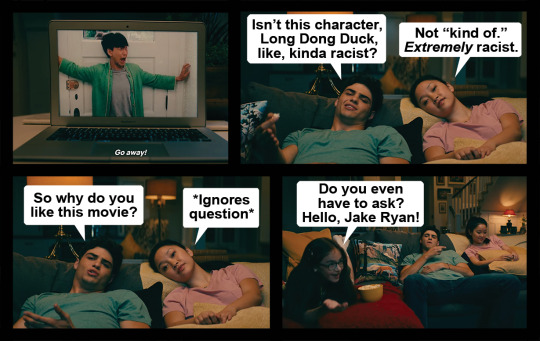
This is because AsAm media is held hostage by the racist framework of the U.S. government's 1942-43 Mixed Marriage Policy. White men's hierarchy—based on perceived threat levels and receptiveness to white assimilation—still dictates Hollywood narratives.
Research confirms that the MMP persists today. A 2015 study shows how gendered racism leads to severe under-representation of Asian men (and Black women). Whereas monoracial Asian men face significant barriers in dating, a 2014 study shows mixed-white Asians get a "bonus effect."
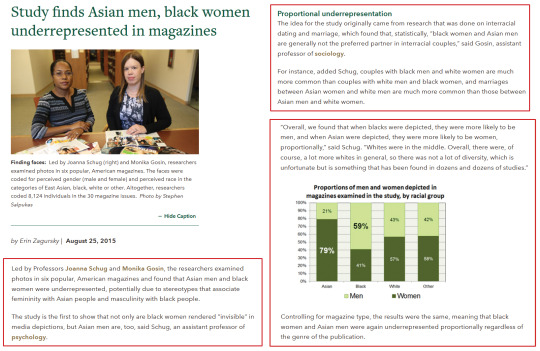
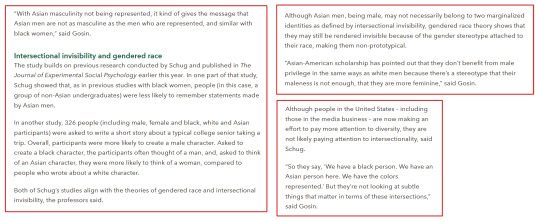
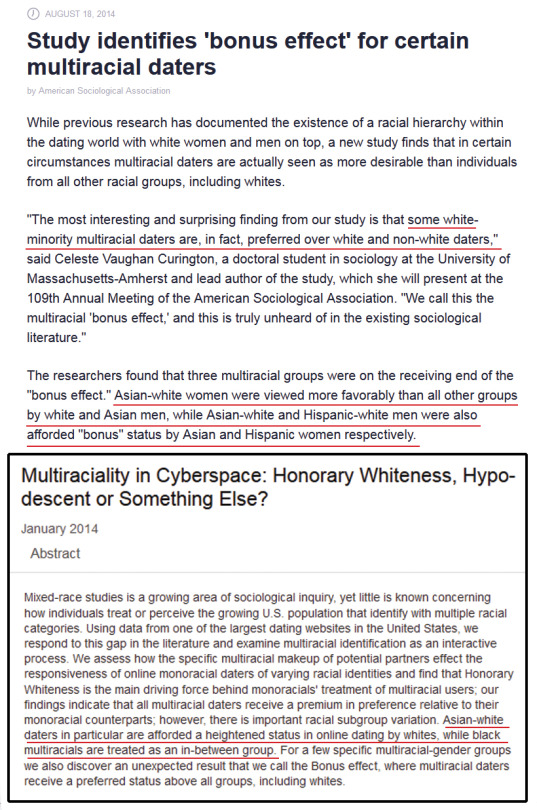
This is why Hollywood execs know there will be less uproar if monoracial Asian men aren't represented—it's been the status quo for decades. In the few roles made for Asian men, they still fall into two categories: pathetic loser or toxic man/villain. In some cases, both.
The hatred and erasure of Asian men is so deeply embedded that it's led to the widespread erasure of AAPI men as victims of anti-Asian hate crimes in recorded stats and media narratives. AAPI journalists know this, yet continue to do nothing to correct it.
So what's next for AsAm representation? In 2022, Janet Yang became president of the Oscars. She's co-founder of Gold House—an AsAm Hollywood collective—and executive producer of Joy Luck Club, a seminal work bashing Asian men as irredeemable misogynists compared to "good" white men.
Many AsAms like Yang want more of Joy Luck Club and similar stories. Amy Tan, author of JLC, has been pushing for years for a sequel with the original cast. A TV series was optioned in 2017, and as of 2022 a movie sequel is to be written by white male screenwriter, Ron Bass.
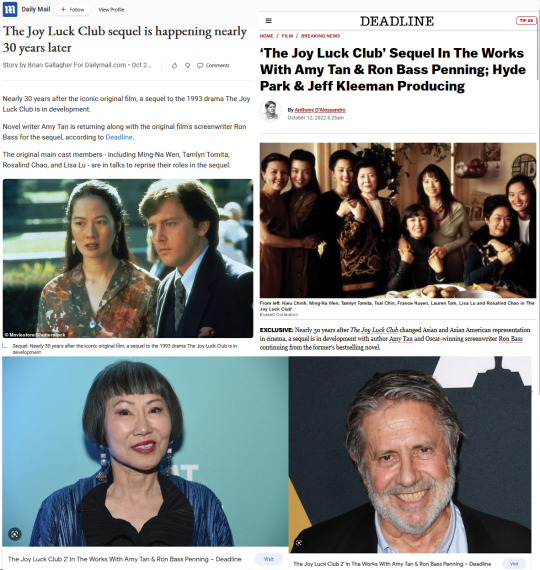
Stories like Joy Luck Club aren't just bad media—they're dangerous. Arthur Martunovich randomly hammered three AsAm men to death because he saw a movie depicting Chinese men as abusers and he wanted to "protect Chinese women". There's a high chance that movie was JLC.
Hollywood has figured out it’s easy to make anti-Asian films and stifle criticism by hiring Asian tokens to give stamps of approval. An article from 1986 (40 years ago) about AsAm criticism of racism in Big Trouble in Little China shows there's a history of sowing division among AAPI and using government resources to do it.
I understand the allure of the Hollywood dream because I used to believe in it myself. From an early age, all marginalized groups—POC, women, LGBTQ+—are taught to fantasize about how we'll finally be accepted and heal the hurt once we get on a big stage and give an award speech.
Having experience in Hollywood as a comic creator, I know how people in power (esp. white men) behave. Their goal is to wear you down until you internalize their bigoted messaging, regurgitate it yourself, and then thank them for it. They hate the word "no."
Awards don't matter if the content that gets you there ultimately serves bigoted and harmful purposes. In 2020, I made a test for AAPI media. None of the projects so far have passed. That's by design. We think we’re holding the statue, but really, it’s holding us.
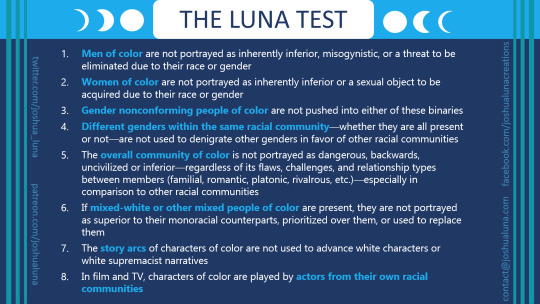
Correction: I just noticed a typo in the comic. Inside the Hollywood sign's letter "Y" I meant to say "non-Asians" not "non-whites." Sorry, it was a lot of drawing and writing, and I got tired 🥴
(Please don’t repost or edit my art. Reblogs are always appreciated.)
If you enjoy my comics, please pledge to my Patreon or donate to my Paypal.
https://twitter.com/Joshua_Luna/status/1134522555744866304
https://patreon.com/joshualuna
https://www.paypal.com/paypalme2/JoshuaLunaComics
#asians in hollywood#aapi in hollywood#asian representation#aapi representation#oscars#academy awards#racism#anti-asian racism#gendered racism#hate crimes#anti-asian hate crimes#media analysis#asian americans#fil am artist#my art#artists on tumblr#joshua luna#josh luna
103 notes
·
View notes
Text
Love Alarm
youtube
"Love Alarm" uses the love alarm app, a piece of advanced technology, to signify otherness in human identity, particularly in love and relationships. The app creates a world where a person's desirability is quantified and broadcasted for others to see. This can be seen as a commentary on how technology can impact and commodify human relationships, touching upon themes related to class, popularity, and social hierarchy. It also explores the emotional distance that technology can create in human connections.
Humanist Practices: enhancing Human Connection and the emphasis on Human Emotions. The love alarm app is introduced as a tool to help people find love and emotional connection. It aims to enhance the human experience by allowing individuals to easily identify potential romantic partners. Post-Humanist Practices: blurring boundaries, dependency on technology, and people's exploration of identity. While the series primarily focuses on human emotions and relationships, it does introduce the idea that technology can blur the boundaries between the digital and physical worlds. The love alarm app creates a new layer of reality in which people's feelings are quantified and publicly displayed. It also depicts a society increasingly dependent on technology for matters of the heart. It suggests a shift in the way humans engage in romantic relationships, relying on algorithms and digital interfaces.
While "Love Alarm" doesn't explicitly involve aliens or monsters, it does depict the Love Alarm app as something that can feel alien and monstrous in its ability to disrupt traditional human relationships. The intrusive nature of the app, which broadcasts one's feelings to the world, can be seen as a form of emotional invasion, creating a sense of alienation and monstrosity in the characters' lives.
“Love Alarm" doesn't directly address geopolitical concerns in the traditional sense. Still, it touches on broader societal issues related to technology and social dynamics that can be interpreted as indirect commentary on contemporary problems. For example, the app "Love Alarm" raises questions about privacy and surveillance as the app collects and broadcasts users' emotional data. This theme resonates with contemporary debates on data privacy, surveillance, and the ethics of technology companies collecting and using personal information.
The central premise of the love alarm app serves as a reflection on the complexity of human emotions. It raises questions about whether love can be reduced to a numerical value and whether technology can accurately capture the nuances of human emotional experiences.


Questions:
In the context of the love alarm app's impact on social inequality and self-esteem, how does the series comment on the intersectionality of identities, such as gender, class, and physical appearance? How do they relate to broader discussions of identity in contemporary society?
"Love Alarm" introduces a world where emotions are quantified and exposed for public scrutiny. Can you draw connections between the show's exploration of this theme and real-world examples or ethical frameworks?
How does the love alarm app in "Love Alarm" impact the characters' everyday lives and decisions, and how does this reflect the influence of technology on modern relationships and societal norms?
14 notes
·
View notes
Text
youtube
0:10Social movements fight for it.
0:12Politicians promise it.
0:14Police say they enforce it.
0:16And judges and courts claim to embody it.
0:19Yet in an age of intense polarization,
0:22stark divisions have emerged
0:23over exactly what justice looks like
0:26and how to enact it.
0:28So what is justice after all?
0:30And what do anarchists have to say about it?
0:33Justice is a fundamental ethical,
0:35philosophical,
0:36and political concept
0:37that shapes our lives
0:38in countless ways every single day.
0:41The decisions we make are influenced
0:42by our own inner sense of right and wrong,
0:45society's expectations,
0:47and the implicit threat of punishment.
0:49Children navigate justice on the playground,
0:51and when they're disciplined by their parents.
0:54These experiences shape their conceptions
0:56of what they think is fair.
0:59Individual and collective ideas around justice
1:01end up defining how we think society should work.
1:05Throughout history, human societies have developed
1:07their own interpretations of justice,
1:09often with the goal of consolidating power.
1:13The Code of Hammurabi in ancient Mesopotamia
1:15emphasized commensurate punishment,
1:18based on the principle of an eye for an eye.
1:21In ancient Greece,
1:22Socrates went from giving public lectures about justice
1:25and its essential role in maintaining public order
1:28to being put on trial and executed
1:29for corrupting the minds of the youth.
1:32Organized religions have mobilized notions of divine justice
1:36to enforce strict adherence to tradition,
1:39dogma,
1:41and established social hierarchies.
1:44Countless atrocities and acts of violence
1:46have been sanctified by religious decrees,
1:48edicts,
1:49fatwas,
1:50and doctrines.
1:52Religious wars of conquest have imposed ideologies
1:54on local populations,
1:56replacing indigenous forms of justice
1:59rooted in communal equilibrium
2:01with grand unifying myths of salvation,
2:04damnation, and submission.
2:07As European standards of justice
2:09evolved from witch trials and brutal acts of public torture
2:12to modern legal systems with judges, jurors, and courts,
2:17these features became standardized
2:18and incorporated into colonial legal frameworks
2:21in Africa,
2:23Asia,
2:24and the so-called New World.
2:28What we refer to as justice systems
2:31are formalized networks of power relations
2:33designed to serve the interests of a society's ruling class,
2:37but regulated, in part, by its local customs,
2:40culture,
2:41and political institutions.
2:44Today, the so-called justice system of capitalist society
2:48is characterized by the principles of individual rights,
2:51due process,
2:53and the sanctity of private property.
2:56It's a system whereby laws, police, courts, and prisons
3:00exist to enforce social control
3:02in the interest of capitalist economics.
3:06Anarchists see states, capitalism
3:08and their internal hierarchies such as race, caste, and gender
3:12as sources of injustice
3:14because they create inequalities,
3:16institutionalize exploitation,
3:18and restrict individual and collective freedoms.
3:21Most anarchist conceptions of justice
3:23involve fighting against these oppressive systems
3:27and building resilient, autonomous communities in their place,
3:31anchored by principles of solidarity, equity, and mutual aid.
3:34Any formalized system of justice
3:36aims to regulate behavior in accordance with the values
3:39of a given community or society.
3:42This necessarily entails addressing and discouraging behavior
3:45that contravenes or threatens these shared values.
3:50To do this, states employ a disciplinary process
3:53known as criminalization,
3:55through which certain acts are designated as crimes,
3:58and the perpetrators of those acts as criminals.
4:02From the moment of an individual's arrest
4:04to their trial and potential incarceration,
4:06the state assumes control and responsibility
4:09for investigating, judging, and punishing crimes.
4:12Punishment has proven itself over and over
4:14as an ineffective tool for reducing violence.
4:19On the contrary, it tends to reinforce systematic oppression
4:22and increase violence against targeted groups.
4:25On top of that,
4:26it fails to help perpetrators of violence
4:28understand how their actions affect others.
4:32Instead of encouraging people to change their behavior willingly,
4:35punishment fosters resentment.
4:38Many individuals simply refocus their violent actions
4:41where they know they won't be caught,
4:43often leading to increased rates and severity
4:45of domestic or intimate partner violence.
4:50The carceral logic of punishment represses certain actions,
4:53or entire black market industries,
4:56forcing them out of the public spotlight.
4:59However, it does nothing to address the underlying root causes
5:02of what states deem antisocial behavior.
5:05And in many cases, simply creates new opportunities for gangs,
5:08cartels, and other organized enterprises
5:11built to compete in the violent unregulated markets
5:14created by state decree.
5:17While the law claims to treat everyone equally,
5:19its application is used to disproportionately criminalize
5:22certain groups over others
5:23based on the operation of power in a given society.
5:27In some states, it may target certain religious or ethnic minorities.
5:31In others, it may be women or queers.
5:35In settler colonial societies,
5:37founded on slavery and genocide,
5:40it's Black and indigenous people.
5:44Those who find themselves subjected to a state's justice system
5:47face the traumatic experience of being violently
5:50cut off from society,
5:52then struggling to reintegrate.
5:55While most states cite rehabilitation as a primary goal
5:58of the criminal justice system,
5:59the reality is that processes of criminalization and incarceration
6:03primarily serve to perpetuate cycles of poverty,
6:06mental illness, and horizontal violence,
6:09creating a hyper-marginalized and disposable
6:11stratum of the population.
6:14Disproportionate criminalization among targeted communities
6:18doesn't just affect those who are incarcerated.
6:21It disrupts families
6:22and community relationships for generations.
6:25Prisons, often portrayed as housing dangerous anti-social monsters,
6:30predominantly house poor, traumatized individuals.
6:33So-called correctional officers subject these prisoners to further trauma,
6:37trapping them in toxic, overcrowded environments
6:40governed by strict hierarchies of gendered violence.
6:45These institutions do produce monsters
6:48... on either side of the bars.
6:50Even so, the capacity of prisoners to harm society is relatively minuscule
6:54when compared to the actions of CEOs, bankers, and politicians
6:59whose decisions affect the lives of millions.
7:02Anarchists reject the state's framework of criminalization
7:05and the police and prisons that underpin it.
7:08Yet in a world where trauma, alienation, and poverty are widespread,
7:13people all too often hurt each other.
7:16A world without prisons or police doesn't mean a world
7:18where harm isn't confronted and addressed.
7:20While anarchists hold a diversity of views on how best to do this,
7:24most solutions emphasize popular organizing of community defense
7:28and a community-based method of navigating conflict,
7:31identifying root causes of violence,
7:33and addressing them in a participatory framework.
7:37In some circles, this process is known as transformative justice.
7:42Transformative justice as an alternative to state-imposed justice
7:46aims to facilitate understanding between different parties of a conflict,
7:50encouraging them to directly participate in their own healing,
7:54and in determining what a just resolution looks like in a given situation.
7:59Often, it will look at what needs people were trying to address
8:02when they engaged in harmful behavior,
8:04and will try to seek out healthier solutions or outlets to this problem.
8:10Interpersonal violence is often conditioned by personal and collective histories of trauma.
8:15It is passed down across generations
8:17and shaped by our relationship to systems of exploitation and oppression,
8:20such as capitalism,
8:22colonialism,
8:23patriarchy,
8:24and white supremacy.
8:26Without discounting individual accountability,
8:29it's essential to recognize the ways in which the culture we're all soaked in
8:32feeds our tendency to harm one another.
8:35Properly coming to terms with this reality
8:37involves practicing self-accountability above all else.
8:40No one is above hurting others.
8:44In our alienated, hyper-atomized societies,
8:47the demands of capitalism and the constant burnout
8:49it imposes on our bodies
8:51often leave us without the time or energy needed to fully engage
8:54in transformative processes of healing and repair.
8:58Our communities often lack the ability or collective will
9:00to deal with severe trauma and mental illness effectively.
9:06To make matters worse, many of us did not grow up
9:08learning the values of navigating conflict and practicing empathy.
9:12Trusting state institutions to handle our conflicts for us
9:15has deprived our communities of vital conflict resolution skills,
9:18and instilled us with an anti-social thirst for punishment.
9:21Rather than putting in the work to try and resolve conflict,
9:24we all too frequently opt for the ease and impersonal nature of social media.
9:29And a voyeuristic call-out culture that further alienates our interactions
9:33and undermines our interests in building meaningful relationships.
9:37In the absence of strong communal bonds or kinship ties,
9:40there is often little incentive for people to participate in transformative justice processes,
9:45or to take accountability for their actions.
9:49Public call-outs are a tacit admission of this.
9:52And in practice, they often serve as little more than warnings
9:55for other members of an extended friend group, social network, or scene
9:59to avoid a particularly violent or abusive individual.
10:03Building capacity for transformative justice
10:06would entail helping communities resolve interpersonal conflict amongst themselves,
10:10thereby avoiding dynamics of exclusion and punishment that echo those of the state.
10:17When revolutionary movements manage to carve out territories of autonomy from the state,
10:21the stakes are raised.
10:23Security and safety are essential cornerstones of justice,
10:26and pushing the police or army out of a given territory
10:29creates a vacuum in which insecurity and injustice can flourish.
10:35If a revolutionary movement is unable or unwilling to fill this vacuum,
10:40they create paths to power for whoever can.
10:43This is a costly and often repeated lesson of history
10:47from the Spanish Civil War,
10:49where Stalinists rebuilt the Republican police forces
10:51and used them to smother the revolution from within.
10:55To war-torn Afghanistan,
10:57where the Taliban slowly re-consolidated their power
11:00by using their strict interpretation of Sharia law
11:03to settle local disputes in areas effectively abandoned by the state.
11:09Fighting for a new society
11:10means constructing and fostering alternatives in the here and now,
11:13that can spread as we build our collective power.
11:17Far too often, an inability to constructively navigate conflict
11:20and to take care of one another's needs
11:22has been the ruin of radical collectives and social movements.
11:28So long as we're living in an unjust world,
11:30any pursuit of justice will entail some level of discomfort, pain, and distress.
11:35Developing and popularizing anarchist conceptions of justice
11:39will mean breaking habits,
11:40taking risks,
11:42practicing,
11:43and critically experimenting wherever we can.
11:46If we desire a world without prisons and the police,
11:49we'll need to build it together.
12:03you
#submedia#judicial#anarchy#government#police state#gender#patriarchy#radfem#corruption#police#military#social media#o#Youtube
12 notes
·
View notes
Text


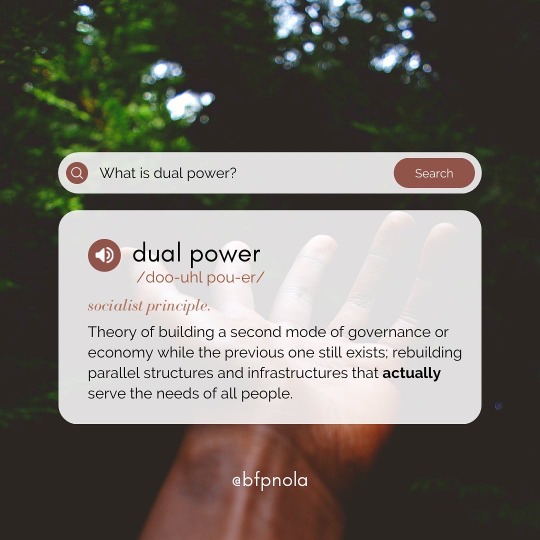

On this Native American Heritage Day as well as Black Friday, a holiday that reinforces capitalistic structures, Better Future Program would like to reiterate our belief in the power of mutual aid and community support! For Giving Tuesday we will be collecting funds from our peers to redistribute them back into marginalized communities, and this, too, is a form of mutual aid. Your money will be utilized to create paid internships, educational workshops, resource giveaways (i.e., school supplies, food, clothing), and so much more for those of the global majority.
Black, Indigenous, and People of Color deserve better. Disabled, mad, and neurodivergent folks deserve better. Religiously marginalized folks deserve better. Migrants deserve better. Low income folks deserve better. Women and femmes deserve better. Everyone. Deserves. Better.
With proper engagement, BFP believes that we can create a future in which youth are not only empowered to challenge oppressive hierarchies each day, but to create new, innovative, and inclusive frameworks of community care and intersectional justice. Consider supporting this vision through donations this Tuesday!
66 notes
·
View notes
Text
Orientalism by Edward W. Said
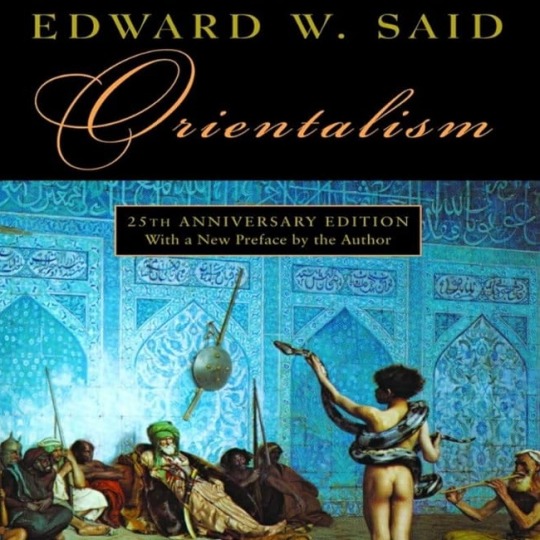
“Orientalism is not, therefore, an airy European fantasy about the Orient, but a created body of theory and practice in which, for many generations, there has been a considerable material investment.”
Published in 1978 by revered Palestinian–American scholar Edward W. Said (1935-2003), Orientalism is a landmark work that examines how the Western world has perceived and represented the East, specifically the Middle East, North Africa, and Asia. Said interrogates how the concept of “the Orient” emerges throughout history as a European (and then American) response to a perceived cultural and religious Other that is both threatening to and something to be dominated by the West. Through careful examination of European (neo)colonial texts, literature, and art, Said explores historical and modern power dynamics and cultural stereotypes that cast “the Orient” and “Orientals” as fundamentally different from and inferior to “the Occident” (the West) and “Occidentals.” A foundational text in postcolonial theory and cultural history, Orientalism is an intellectually rigorous analysis that dives deep into the complex iterations of a defining framework of Western ideology.
By illuminating how Orientalist ideology functions, Said encourages us to critically examine our assumptions and reject inaccurate, harmful narratives of “the other.” He challenges us to interrogate the very notions of “West” and “East,” and “us” and “them,” prompting us to imagine the possibilities of celebrating and respecting cultural differences without hostility, hierarchy, and domination. Given the urgent need for enhanced decolonial efforts in the face of rising neocolonialism and the need to vigorously combat harmful representations meant to divide the marginalized, Said's insights remain more important than ever.
✨
Visit the-radical-reader.com to learn more about Orientalism—its historical context, its big ideas, common misunderstandings, how it’s influenced history, and how it can inspire your action for collective liberation.
#edward w. said#edward said#orientalism#postcolonialism#postcolonial theory#leftism#leftist theory#the radical reader#knowledge is power#seize the theory#anti zionisim#free palestine
3 notes
·
View notes
Text

The Hierophant card in the Major Arcana is intrinsically linked to the zodiac sign Taurus, encapsulating themes of tradition, spiritual guidance, and conformity to established societal structures. As a symbol of traditional values and spiritual authority, The Hierophant acts as a conduit between the earthly and the divine, imparting age-old wisdom and encouraging adherence to established norms. This card mirrors the Taurian value system, which places a high premium on stability, routine, and the practical application of knowledge. Taurus individuals, known for their steadfast nature and practical approach to life, often seek comfort in the reliability of tradition and the structured guidance of authority figures.
The Hierophant’s presence in a tarot reading suggests a period of learning through conventional means or the importance of consulting with a mentor or guide. For Taurus, this resonates with their methodical pursuit of success, preference for tried-and-true methods, and respect for hierarchy and discipline. This card champions the idea of belonging to a community or institution and finding one's place within pre-defined frameworks, which appeals to Taurus's need for security and their belief in the power of collective wisdom. In essence, The Hierophant embodies the synthesis of spiritual insight and practicality, echoing the Taurian inclination towards building a life grounded in enduring values and tangible achievements.
3 notes
·
View notes
Note
the usa included white for latinos to describe themselves because there are white latinos. Anya Taylor Joy is a white argentinian the same as Alexis Bledel. White people in latinoamerica came from the same place white americans did . There can be a brown italian the same as a white one, but no one is white or brown due to where they were born. Nationality isn't a shorthand for ethnicity.
White and brown do not describe nationality or ethnicity. White and brown are racial descriptions.
Ethnicity is a collection of cultural activities, cultural traditions, and family heritage. Ethnicity can be easily and universally defined.
Nationality is a political construct. Nationality can be easily and universally defined.
Race is a social construct that maintains a hierarchy based on continually evolving pseudoscience. It is not a logical rational system. Race cannot be easily and universally defined.
Latino is an ethnicity that is racialized in US and Canadian society.
Anya Taylor Joy has a half British half Anglo-Argentine father and half British half Spanish mother. Basically, she is 75% British and 25% Spanish. She has dual US and UK citizenship and speaks fluent English and Spanish. She's not a citizen of Argentina. Anya is not the average person with ties to Latin America. But Anya is the token white girl brought up when discussing Latino social status in the US and Canada.
For every one Anya, there are 10,000 Latinos identifying as white on the census because they have one European grandparent. Race does not have universal definitions.
Teddy Roosevelt thought that 100% European Spaniards were too brown to rule over Cuba. Spaniards in the US are racialized as Latino until they differentiate themselves and/or say something prejudiced against Latinos.
Latinos with lighter skin enjoy privileges in Latin America leftover from the colonial casta system. If those same Latinos move to the US or Canada, those systemic privileges evaporate and they are racialized. The US government lets them identify as white. But that doesn't change the fact that there is a systemic racial category for all Latinos in US and Canadian society. Inside Latino society, race is understood differently. White and brown in Ciudad Juarez are different from white and brown in El Paso. For a US census, which racial framework are we trying to analyze? Ciudad Juarez or El Paso?
Are the categories white hispanic and non-white hispanic helpful for understanding the status of Latinos in the US? 2 million Latinos in the US are Brazilian and 1 million Europeans in the US are Spanish. So, what exactly are we doing here? Are we getting accurate census data about the US Latino population?
3 notes
·
View notes
Text
Exploring the Archaic Father Archetype: A Fusion of Flexibility and Winning in Evolutionary Psychology
Deep within the fabric of human understanding, certain figures stand out for their timeless influence and wisdom. One such figure is the "Archaic Father," a concept that transcends the boundary of time and culture, offering a wellspring of knowledge and guidance that remains as relevant today as it was in ancient times.
What is the Archaic Father?
The Archaic Father is an embodiment of authority, wisdom, and structure—a primal, powerful presence within the collective consciousness described by Carl Jung, a founding father of analytical psychology. This archetype represents the ancient spirit of leadership, protection, and guidance that has shaped civilizations and personal development across millennia. Now, will the archetype has a lot of relational factors and oppositional forces. I have broke down, an equation for what I mean exactly on archiac father.
Archaic Father = Winner x Flexibility
Why Explore the Archaic Father Archetype?
In a world brimming with relentless change and uncertainty, the Archaic Father archetype provides an anchor, a psychological and cultural touchstone that brings clarity and stability. When channeling him. It's a compass for those who seek to lead, mentor, or find their own path in life. By understanding the Archaic Father it will offer you insights into human nature and the bedrock principles of successful leadership and personal growth. Channeling the Archaic Father can help us tap into our own reserves of courage and resilience, guiding us through life's challenges. For those in leadership roles, understanding this archetype can enrich your ability to guide, inspire, and protect those under your stewardship. This figure is deeply woven into the fabric of mythology, religion, and history, offering a rich vein of narrative and symbolism to explore and connect with. The qualities of the Archaic Father are not relics of the past but are vital attributes that can be nurtured and expressed in contemporary life. By embodying the archetype's wisdom and guidance, modern leaders can navigate complex landscapes with a sense of purpose and Individuals can draw upon this archetype to foster a sense of self-discipline, integrity, and vision in their personal lives.
Writers and artists can explore and express the nuances of the Archaic Father, bringing his presence to life in works that resonate with audiences today. Understanding the Archaic Father is not merely an academic exercise. It's about recognizing and harnessing a force that has shaped human behavior and societal structures for centuries.
The intersection of Jungian archetypes and evolutionary psychology offers a compelling lens through which to examine the human experience. At the heart of this exploration lies the Archaic Father archetype, a construct that encapsulates the essence of authority, tradition, and collective wisdom. This figure, deeply woven into the fabric of the human psyche, has been a guiding force across various cultures and epochs.
By proposing my equation "Archaic Father Archetype = Flexibility x Winner," we will delve into the intricate relationship between adaptive behavioral traits and reproductive success, and the resulting impact on the formation of social hierarchies and leadership models. This thesis seeks to unravel the complexities of the Archaic Father archetype, emphasizing its evolutionary significance and the reasons behind its pervasive influence.
The Importance of the Archaic Father Archetype in Understanding Human Behavior
The concept of the Archaic Father archetype is essential for several reasons. Firstly, it provides a framework for understanding how ancient social and sexual selection pressures have shaped the psychological traits associated with leadership and authority. Secondly, it offers insights into the enduring nature of certain behavioral patterns, particularly the flexibility required to navigate ever-changing social and environmental landscapes. This adaptability has been crucial for the survival and prosperity of our species, marking those who possess it as "winners" in the evolutionary sense. Moreover, the Archaic Father archetype serves as an explanatory model for the distribution of power and resources within societies, as well as the dynamics of mate selection and familial structures. By examining this archetype, we gain a deeper appreciation for the underlying forces that have sculpted human social evolution and continue to influence contemporary behavior and relationships.
In summary, the Archaic Father archetype characterized by behavioral flexibility and evolutionary success offers a valuable template for understanding the development of complex social systems and the role of authority within them. This exploration is not only academically enriching but also crucial for a nuanced grasp of the factors that drive human interaction, leadership, and societal organization. Through this lens, we can better comprehend the roots of our actions and motivations, bridging the past with the present in our quest to decipher the human condition.
Jungian archetype
In the realm of Jungian archetypes, the Wise Old Man embodies a repository of tradition and wisdom, appearing as a fatherly guide through various cultures and narratives. Jung's seminal work on archetypes includes the concept of the Father archetype, which is considered a symbol of guiding authority or power.
In this foundational text, Jung (1959) explains the concept of archetypes within the collective unconscious, including the Father archetype, which embodies wisdom, structure, and patriarchy. These archetypes, including the Father figure and Wise Old Man, offer a blueprint for recognizing universal patterns within the human psyche across different societies. The storytelling role of the Father archetype often acts as a moral compass for the main character, echoing Jung’s notion of archetypal influence on behavior. Beyond a mere paternal image, the Father archetype in Jungian psychology represents societal authority, discipline, and order. Its recurrent appearance in dreams and myths signifies a profound anchorage within the collective unconscious. The Senex archetype, reflecting knowledge and stability, is a prominent feature in numerous historical and religious accounts. Often cast as the keeper of knowledge and societal law, the Wise Old Man mirrors the paternal archetype's directive essence. According to Jung, the Father figure channels the collective wisdom of bygone eras, shaping individual notions of power and duty. In therapeutic contexts, the emergence of the Father archetype in transference uncovers underlying attitudes toward authority figures. This archetype’s persistent relevance in contemporary media highlights its integral function in character and plot formation, extending its influence to representations of fatherhood and leadership in various visual art forms. Jungian analysis of this archetype is a key instrument for psychologists and scholars to interpret symbolic content in cultural and personal tales.
Evolutionary psychology
Evolutionary psychology examines psychological traits as adaptations for survival and reproduction. It also serves as a lens to decipher the origins of complex behaviors and psychological traits that likely evolved to enhance reproductive success. The discipline posits that mental strategies beneficial for survival were naturally selected in our ancestors. It considers the evolution of the brain as a means to solve ancestral survival and reproductive dilemmas, with traits like social bonding, aggression, and mate selection under scrutiny through this perspective. The innate fear response exemplifies evolutionary psychology, demonstrating how swift reactions to danger could boost survival chances.
Buss (1995) provides a comprehensive overview of evolutionary psychology, presenting the discipline as a paradigm that examines psychological traits as the outcomes of evolutionary processes. According to Buss (1995) even contemporary human behaviors are rooted in our forbearers' evolutionary challenges. Their social and sexual selection has marked us deeply, and are archaic but automatic mechanisms within humans. So, investigations into psychological adaptations typically explore universal behavioral patterns and cultural similarities. Insights into mating strategies from an evolutionary angle elucidate the intricate connections between biology, psychology, (archiac but automatic mechanisms within) and societal norms. Furthermore, the field offers understanding towards the endurance of certain cognitive biases in humans, such biases that are caused by an activation of automatic mechanisms within, as remnants of ancient adaptive processes. Emotional reactions like disgust and joy, consistently observed across cultures, can be linked to evolutionary psychology concepts. The application of evolutionary psychology spans to modern issues such as mental health, providing evolutionary explanations. Interdisciplinary collaboration with fields like anthropology and biology enriches evolutionary psychology, offering a multifaceted view of human conduct.
Winner x Flexibility= Archaic Father
Basically, all human fathers today, were winners. They were rich, won wars and reproduced. Flexibility in behavior is often discussed in the context of evolutionary advantages, leading to success or "winning" in certain environments. (Mithen 1996) Mithen's work (1996) explores the development of the human mind from an evolutionary perspective, arguing that cognitive flexibility was a crucial factor in the success of early humans in diverse environments.
Behavioral flexibility is lauded in evolutionary terms, equipping organisms to navigate environmental flux and often correlating with reproductive success. Such adaptability in behavior to shifting contexts is a sign of evolutionary triumph, aiding in outperforming rivals for resources and partners. This flexibility in problem-solving and decision-making likely played a significant role in human evolutionary progress. In social species, this adaptability is evident in managing intricate social structures, which is pivotal for both survival and reproductive success. Evolutionary victors typically balance competitive and cooperative behaviors, necessitating behavioral flexibility. The capacity to modify behavior in the face of competition has been a crucial evolutionary strategy for many species. The human species owes part of its success to exceptional cognitive flexibility and adaptability. Learning from past experiences and applying this knowledge to novel scenarios has been key to human endurance. In evolutionary terms, a "winner" is characterized not only by physical strength but also by mental and social adaptability. The dynamic between individual flexibility and group interactions is vital in evolutionary psychology, underscoring its significance in evolutionary victory. Evolutionary psychology contends that the propensity for innovation and strategic alteration in the face of new obstacles is indicative of evolutionarily successful individuals.
Flexibility as a behavioral trait is not just about physical or mental adaptability but also encompasses the ability to innovate and strategically alter responses to new challenges. Such versatility is not only advantageous but also a defining characteristic of evolutionary winners—organisms that have managed to outcompete others for vital resources and mates. This flexibility extends beyond mere survival tactics; it allows for the nuanced management of social relationships and hierarchies, which are especially complex in social species like humans. The evolutionary success of an individual or species often hinges on this capacity for behavioral plasticity, enabling them to thrive in a variety of environments and social contexts. cognitive flexibility, in particular, has been a critical factor in our species' dominance. Our ability to learn from the past and apply that knowledge to new and unforeseen situations has allowed for cultural and technological advancements that are unparalleled in the animal kingdom. The concept of a "winner" in evolutionary terms, therefore, is not confined to the strongest or the fastest but also includes the most intellectually and socially adaptable. Evolutionary psychology sheds light on this by studying the interplay between individual flexibility and group dynamics, emphasizing the importance of both in achieving evolutionary success.
The insights garnered from evolutionary psychology not only help us understand the roots of human behavior but also bridge the gap to our ancestral past, informing us about why we act the way we do today. By examining traits and behaviors through this evolutionary framework, we can appreciate the intricate dance of adaptation and selection that has shaped the human experience. This perspective is invaluable, not only for academics but for anyone seeking to understand the complexities of human nature and the deep-seated impulses that drive us.
Archaic Father
The concept of the archaic father in evolutionary psychology can be viewed as a fusion of Jungian archetypes and evolutionary principles. In Jungian terms, the archaic father represents a primordial image of authority, leadership, and the collective wisdom of society. This figure is deeply rooted in the collective unconscious and embodies the traditional values and norms that have guided human societies through the ages. The archaic father archetype is often symbolized by powerful, sometimes tyrannical figures, reflecting the omnipotence and potentially oppressive aspects of patriarchy.
From an evolutionary psychology perspective, the archaic father could be interpreted as an embodiment of successful strategies for group cohesion, resource control, and social dominance. In the harsh environment of our ancestors, the ability to lead, provide for, and protect a group would have significantly increased the chances of survival for both the individual and their offspring. As such, the archaic father figure might have evolved as an adaptive social strategy, representing the ideal of leadership qualities that were favored in the context of human social groups.
This figure would have been the main enforcer of social rules and the distributor of resources, which in turn could have led to increased reproductive success for those falling under his protection or favor. Moreover, the archaic father's role in establishing and maintaining order might have been crucial in creating a stable environment for the group, thus facilitating the survival and eventual transmission of his genes as well as the culture of the group.
The archaic father archetype can also be connected to the concept of the alpha male found in many social animals, where the leader exerts control over the group and gains preferential access to mates. In humans, this concept extends to the ability to influence and enforce cultural norms and practices, which in turn can impact the evolutionary fitness of the group as a whole.
In summary, the archaic father as seen through the lens of evolutionary psychology represents not just a symbolic figure from our collective past but also a potentially adaptive set of traits and behaviors that have been selected for over countless generations. This enduring representation of authority and wisdom encapsulates the intersection of our psychological heritage and our evolutionary history, showcasing the complex interplay between culture and biology in shaping human behavior.
The term "channeling archaic fathers" could be interpreted in several ways, depending on the context in which you're using it. Here's how this concept might be understood from both a Jungian psychology perspective and a broader cultural or literary interpretation:
Jungian Psychology Perspective
In the context of Jungian psychology, "channeling the archaic father" could refer to an individual tapping into the collective unconscious where the archetype of the Father exists. The Father archetype represents authority, wisdom, guidance, and structure. When someone is said to be channeling this archetype, it can mean that they are embodying or expressing these qualities in a way that seems to come from a deep, instinctive source beyond their personal experiences.
For example, a person in a leadership role who provides guidance and protection in a way that resonates on a symbolic level with many people might be described as channeling the archaic father.
Cultural or Literary Interpretation
In a cultural or literary context, the phrase could be used to describe a situation where a character or a person is drawing upon the ancient or traditional qualities or roles associated with fatherhood or patriarchal figures. This might be seen in literature where characters take on roles that echo the traditional father figure in terms of their behavior, decisions, and interactions with others.
For example, in a novel, a character who takes on the role of a mentor or protector for a younger character, providing wisdom and guidance, could be described as channeling the archaic father.
In both interpretations, this concept relates to the idea that certain patterns of behavior or roles are deeply ingrained in the human psyche or cultures and can be expressed or recognized across different times and societies.
Conclusions
In conclusion, the concept of "channeling the archaic father" can be understood through various lenses, including Jungian psychology and broader cultural narratives. From a Jungian standpoint, it involves tapping into the collective unconscious to express the Father archetype's qualities of authority, wisdom, and structure. Culturally, it may refer to the embodiment of traditional paternal qualities or roles that resonate across time and societies. The concept underscores the enduring nature of certain archetypal roles and their influence on both individual behavior and societal expectations. Whether these archaic patterns manifest in personal psychology, literature, or social dynamics, they serve as a testament to the persistent and shared aspects of human experience.
Reference:
Jung, C. G. (1959). The archetypes and the collective unconscious (R. F. C. Hull, Trans.; 2nd ed., Vol. 9, Part 1 of Bollingen Series XX). Princeton University Press. (Original work published 1954)
Buss, D. M. (1995). Evolutionary psychology: A new paradigm for psychological science. Psychological Inquiry, 6(1), 1-30. https://doi.org/10.1207/s15327965pli0601_1
Mithen, S. (1996). The prehistory of the mind: The cognitive origins of art, religion and science. Thames & Hudson.

2 notes
·
View notes
Text
List Interface in Java With Program Example
List interface inherits Collection interface that provides behaviour to store a group of individual objects. It represents group of individual objects as single entity where duplicates are permitted and elements are ordered in the same manner in which they are inserted. It resides within java.util packages.
It defines listIterator() method which returns ListIterator object which empowers the…
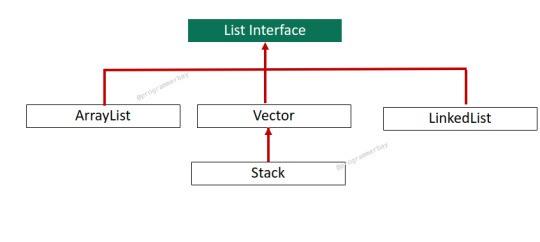
View On WordPress
#collection#collection framework#Hierarchy in Collection Framework#java#java program#List#List interface
0 notes
Text
.
The [feminist] perspective is almost pure anarchism. The basic theory postulates the nuclear family as the basis for all authoritarian systems [under capitalism]. The lesson the child learns, from father to teacher to boss to God, is to OBEY the great anonymous voice of Authority. To graduate from childhood to adulthood is to become a full-fledged automaton, incapable of questioning or even thinking clearly. We pass into middle-America, believing everything we are told and numbly accepting the destruction of life all around us.
What feminists are dealing with is a mind-fucking process—the male domineering attitude toward the external world, allowing only subject/object relationships. Traditional male politics reduces humans to object status and then dominates and manipulates them for abstract “goals.” Women, on the other hand, are trying to develop a consciousness of “Other” in all areas. We see subject-to-subject relationships as not only desirable but necessary. … Together we are working to expand our empathy and understanding of other living things and to identify with those entities outside of ourselves, rather than objectifying and manipulating them. At this point, a respect for all life is a prerequisite for our very survival.
[Feminist] theory also criticizes male hierarchical thought patterns—in which rationality dominates sensuality, mind dominates intuition, and persistent splits and polarities (active/passive, child/adult, sane/insane, work/play, spontaneity/organization) alienate us from the mind-body experience as a Whole and from the Continuum of human experience. Women are attempting to get rid of these splits, to live in harmony with the universe as whole, integrated humans dedicated to the collective healing of our individual wounds and schisms.
In actual practice within the Women’s Movement, feminists have had both success and failure in abolishing hierarchy and domination. I believe that women frequently speak and act as “intuitive” anarchists, that is, we approach, or verge on, a complete denial of all patriarchal thought and organization. That approach, however, is blocked by the powerful and insidious forms which patriarchy takes—in our minds and in our relationships with one another. Living within and being conditioned by an authoritarian society often prevents us from making that all-important connection between feminism and anarchism. When we say we are fighting the patriarchy, it isn’t always clear to all of us that that means fighting all hierarchy, all leadership, all government, and the very idea of authority itself. Our impulses toward collective work and small leaderless groups have been anarchistic, but in most cases we haven’t called them by that name. And that is important, because an understanding of feminism as anarchism could springboard women out of reformism and stop-gap measures into a revolutionary confrontation with the basic nature of authoritarian politics.
If we want to “bring down the patriarchy,” we need to talk about anarchism, to know exactly what it means, and to use that framework to transform ourselves and the structure of our daily lives. Feminism doesn’t mean female corporate power or a woman President; it means no corporate power and no Presidents. The Equal Rights Amendment will not transform society; it only gives women the “right” to plug into a hierarchical economy. Challenging sexism means challenging all hierarchy—economic, political, and personal. And that means an anarcha-feminist revolution.
.
2 notes
·
View notes
Text
LSAD Seminar 02: 3D Studies with Elaine Riordan

Above: Geometric Moss Art Installation by Freecell
What is 3D Studies?
This would be a lot easier if I could just say 3D studies is the study of 3D but I doubt LSAD will allow me to away with that. 3D studies is an interdisciplinary field of study involving engagement with the physical and tactile elements of our environment. As opposed to 2D work done on flat canvases and computer screes, 3D work occupies physical space with measurable height, width, depth, weight, etc. 3D studies is relevant to every specialisation and a vital part of the art ad design process.
We are provided a handy checklist by Tutor Elaine Riordan in the seminar that summarises the "what" of 3D studies:
3D Studies may be seen as:
"...fine art or design"
"...small or large scale"
"...positive or negative in form"
"...you and the space you inhabit"
"...made from any material/media"
"...engaging us physically or emotionally"
"...site specific or not"
The elements of 3D studies covered in this seminar include Form, Structure, Texture, Volume, Weight, Space, and Location. These elements are explored through the use of materials and processes and active engagement with the contexts in which the exist. I've included below my best guess explanation of each of these seven concepts.
Elements of Exploration in 3D Studies:
Form

Above: Our given example of an artist who works with form, Ruth Asawa.
What is form?
Form in simple terms refers to the overall "shape" of any given work of art or design. Form is present in even the most two-dimensional works of art, such as the canvas on which a painting is expressed. Over time there has been great movement from artists to challenge and elevate the nature of form in art, taking it from an assumed background element to the forefront.
Further Examples of Asawa's work:

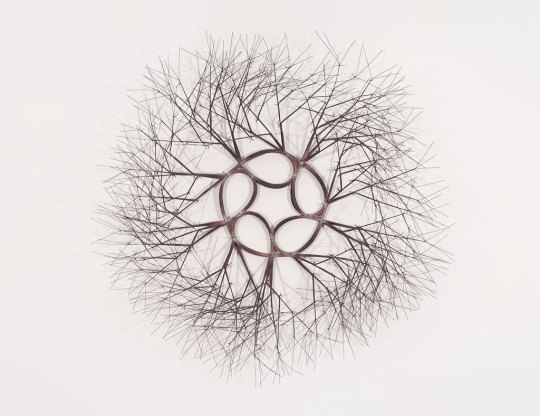

Structure

Above: Our given example of an artist working with structure: Úna Burke.
What is structure?
Structure could well be described as the "shadow" of form. If form represents the resultant, visible outcome of a work of art or design, then structure represents the underlying framework that allows form to exist. If form is often overlooked as a background element, then structure is in the background of the background. Artists who work with structure highlight not the pure outcome of their work, but the "how" and "why" of it.
Further Examples of Burke's work:



Texture

Above: Our given example of an artist working with texture, Junko Mori.
What is texture?
Texture refers broadly to the "feeling" of a given work, whether that feeling be the tactile sensation of cold marble or hardened acrylic, or simply the visible texture of dabbled brushstrokes on canvas. Ultimately texture can express and exude feeling on an entirely separate physiological level from other characteristics of 3D studies. Artists who work with texture can play with our expectations and assumptions by matching or contrasting a works texture to its form, structure, etc.
Further Examples of Mori's work:
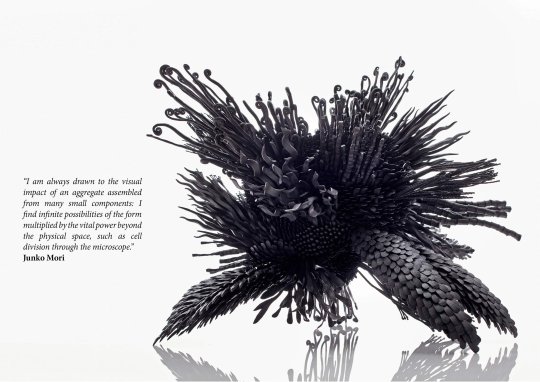


Volume

Above: Our given example of an artist working with volume: Viktor & Rolf.
What is volume?
I've always thought of volume as synonymous with negative space in 3D art. The volume is implied by the form and structure of a given work. Much like how the negative space can't exist without positive, volume cannot exist without its container. Artist who champion volume allow is to see what is not there and in doing so, broaden our collective vision.
Further Examples of Viktor & Rolf's work:

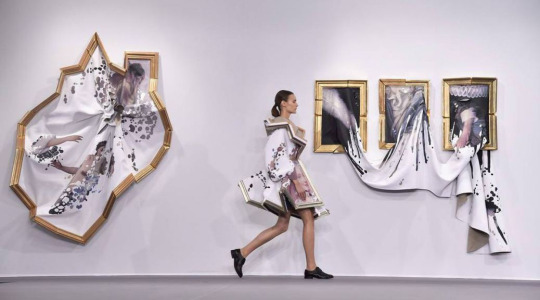
Weight

Above: Our given example of an artist working with weight, Frances Lambe.
What is weight?
Weight refers not just to the literal mass of an object in art and design, but to its prominence in an given piece. Artists who utilise weight in their work often create a strong sense of visual hierarchy and harmony between their various compositional elements. Making the heavy appear light, or the light appear heavy challenges us not just to contemplate the creation of a given piece but to question the world around us and our own underlying assumptions therein.
Further Examples of Lambe's work:



Space

Above: Our given example of an artist working with space, Richard Serra.
What is space?
Space as a concept is similar to volume, in that it's all about the relationship between what is present and what's not. The impression of small object viewed up close from below is starkly different from that same object viewed from a distance in a large empty room, for example. Space can alter and redefine the ideas or intent of a given work by changing its context. The immense power of space is something that must always be considered when creating and appreciating art, as we can no more divorce a work of art from space than we can divorce ourselves from it.
Further Examples of Serra's work:

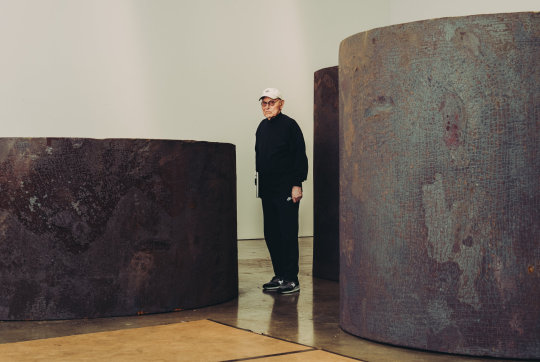

Location

Above: Our given example of an artist working with location, Anish Kapoor.
What is location?
Location, location, location! Similar to, but more specific than space, location deeply affects the context of a given work of art. A urinal displayed in an art gallery leaves a decidedly different impression upon the viewer than a urinal in a bathroom, for example. Location is likely the most context dependent item on this list as it plays into very real cultural and political associations. Something as innocuous as a red post box has a sharply negative connotation here in Ireland. Artists who utilise location display a keen understanding of context and a sympathy for the human experience.
Further Examples of Kapoor's work:


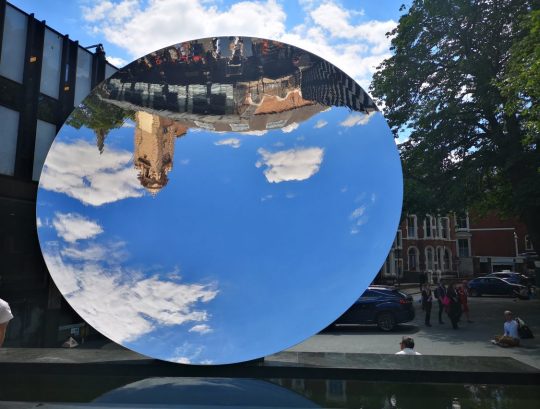
2 notes
·
View notes
Text
A philosophical challenge that "gender-crit" activism needs to overcome is its overemphasis of sex subordination.
In the gender-critical case against trans inclusion, structural subordination on the basis of sex dominates the discussion to the virtual exclusion of anything else. That's not to say there's no such thing as a male dominant society. I would never claim that just the same I would NEVER claim there's no such thing as a white supremacist society.
This is more a commentary on two things: the presupposition of social hierarchies in the ideological investments in structural oppression and structuralist frameworks that gender-crits care deeply about as well as the lack of engagement with intersectional frameworks.
Ideological investments in the structural oppression gender-crits care deeply about has led them to presuppose the validity of the frameworks they're using to interpret this structural oppression rather than take their validity as a hypothesis. This presupposition can lead one to miss noticing other things that are going on, especially things that just can’t, and probably should not, be forced into the explanatory frameworks gender-crits use to interpret structural oppression. "[I]f one inadvertently presupposes the singular centrality, ubiquitous validity, and superior explanatory power of the (natal) male/ (natal) female binary in structuring social relations," they miss many of the following dynamics:
"...the fact that trans girls do not identify with maleness can be expected to make a difference to the outcomes of [their] socialization"
the fact that trans girls exist can lead us to conclude that the supposed male socialization does not inherently produce a cissexual or have a universal outcome
the violence and discrimination that trans women face is connected to the violence and discrimination faced by cis women
the idea that cis women are a culturally subordinate caste while trans women are members of the dominant caste "discounts the ways in which sex, gender, and cis/trans status intersect" given that "[t]hese intersections produce more complex, shifting, and context-dependent power relationships than are captured by the M > F formula."
"Radical feminism, in its simplest form, believes that women’s oppression is the most pervasive, extreme and fundamental of all social inequalities regardless of race, class, nationality, and other factors. It is only under this assumption that the privilege transsexual women are perceived to have (i.e., male privilege) can be viewed as far more dangerous to others than any other privileges (i.e., being white, middle-class, etc.) ... But such ranking of oppressions and simplistic identity politics is inherently oppressive to people who are marginalized due to multiple identities." This is what led the Combahee River Collective to divorce itself from the separatist movement, a movement often lauded in radical feminist circles. "It is not simply that white radical feminists happened to be racist; rather, the series of assumptions behind radical lesbian feminism (e.g., women’s oppression is the most pervasive and fundamental) was faulty as it privileged ‘those for whom that position is the primary or only marked identity.'"
And this is part of what has led black and brown feminist to observe that white women- even white feminist women- are not fighting for the liberation of women, but for equal access to the white supremacist power structure. The only thing in their way is men, so it becomes the most consequential fight for them.
Such ideas about the patriarchy being the most pervasive and fundamental axis of oppression are reinforced in arguments against trans women's inclusion in women's spaces. Once such argument that trans women should be denied entry because their experiences are too different rests on the assumption that all other women’s experiences are the same. Another such argument is that trans women experience a degree of privilege, and while that's something I would dispute, even if we were to take the "gender-crit" assumption of their privilege, we don't exclude people on the basis of having some privilege given that not all women are equally privileged or oppressed (see: white women). Suggesting that safety is dependent on the exclusion of trans women or that trans women compromise the inherent safety of women's-only spaces also ignores the ways women act out violence and discrimination against each other (see: white women and racist violence).
All of this has led to the "gender-crit" movement being *predominantly* white, western, middle class, and heterosexual (re: predominantly, not exclusively, predominantly) because they ignore the intersection of privileges and marginalizations, leading many women-only, trans-exclusionary movements tofail to address how systems or racism, ablesim, and classism are reproduced within their organizations.
11 notes
·
View notes
Text
ppl dont openly appreciate warrior cats enough. you remember the world building? remember how much work and research probably went into just the naming system alone? let alone the religion, the customs, the vernacular, the slight distinctions between the clans (their difference in fighting techniques & physical characteristics; their differences in naming, customs, hierarchies, and roles depending on the geology of their territory, the prey they had to hunt, and the dangers each habitat posed), the *detail* in how one slight difference in each subculture could lead to microaggressions and mini mob manias?? the communism?? the tunnels?? the spartan-style ableism?? HERBS?? this was an entire world. i obsessed over these books as a kid and they legitimately helped me form a framework by which to contextualize the broad scope of real life cultural impacts on individual & collective bases. warrior cats taught me how and i probably wouldn’t have been so enthusiastic about culture or so smart about sociology if not for those books. they weren’t perfect but the enthusiasm for world building was THERE and it was damn thorough.
4 notes
·
View notes